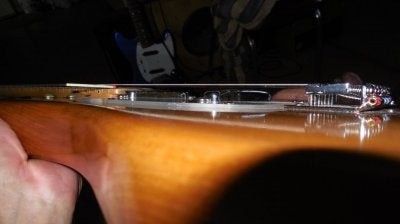Sounds Good
Tele-Afflicted
I use 9s also down a step and about 1.2mm at the 12 fret i have a flat fretboard as well. If one goes to low i cant bend well so personally i would not go lower. On my other few radius guitars the acton is around 1.8mm but i like a flat fretboard feel best it is what i learnt on.


